A gardener whose landscape spaces are overshadowed by mature trees may have mixed feelings about this: there’s plenty of shade to relax in on a hot July day, Right? But just try to grow a rosebush – or any of those much-loved perennials that need abundant sunshine — in that shady garden. You are facing frustration.
Unless you want to lose the trees (which, in my opinion, you most definitely do not!) you may have to re-think what will thrive in your shaded spaces. Fortunately, there are many choices of shade-tolerant and shade-loving perennials to grow for color and texture in your landscape. Here are 10 that should thrive in shady garden beds.
First, define “Shade”
What’s the quality of the shade in your landscape? Part shade/part sun? Light shade? Full shade? Information from Tennessee Master Gardeners provides straightforward explanations:
Part Shade (or semi-shade, half shade) means the garden gets full sun part of the day and full shade part of the day.
Light shade is what some also call dappled shade, the “moving” light and shadows made by the sun filtering through the leaves of deciduous trees.
Full shade means that direct sunlight never reaches a plant’s leaves. This is probably the most easily understood, but the most difficult place for plants to thrive. Even so, there are plants that flourish in full shade.
Perennial favorites for part shade
Astilbe. Some gardeners call this plant false spirea; others may call it meadowsweet. It has fern-like foliage and blooms in feathery white, pink, peach, red or purple plumes. This plant can be a mainstay in your partly shady spaces where the soil is moist (but not soggy), or where you’re most likely to keep it watered; Astilbe hybrids don’t care for dry soil.
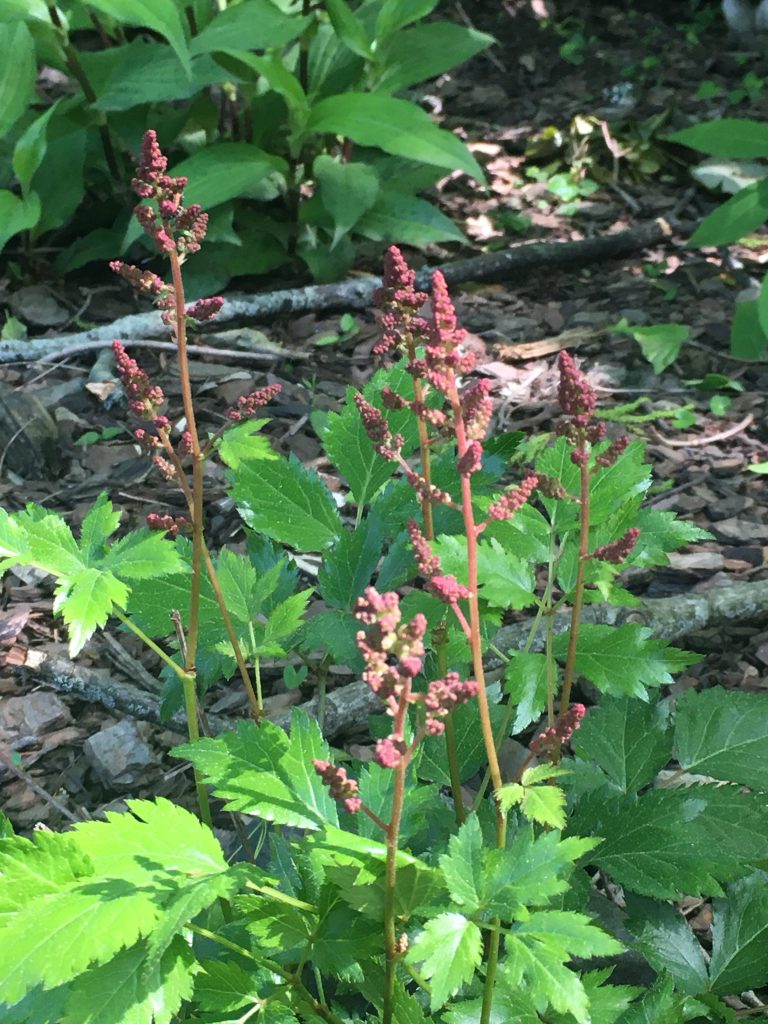
Bleeding Heart. Despite the name, bleeding hearts may evoke a smile when they bloom in your part-shade beds. The flowers of Dicentra (its botanical name) resemble a string of pink or white heart-shaped charms that dangle from long, curved stems. They do best in moist, fertile soil. Early- to mid-spring is their moment to shine; after the flowers are gone, the foliage remains until about mid-summer when it, too, fades away.
Columbine. This is another delicate, early-spring blooming plant that thrives in part to light shade. Aquilegia flowers may be red, yellow, pink, purple, white or bi-colored, and a bed of color combinations planted in masses can look like a party. A downside is that they may be susceptible to leaf miners, tiny insects that burrow into the foliage. They are also short-lived, and may need to be planted every few years.
Hellebore. Not only is Helleborus good for shady spaces, it has the bonus feature of being evergreen and blooming in the winter when everything else is taking a break. You may know of it as Lenten rose, referring to its’ blooming generally around the religious season of Lent – and in our region, much earlier. The sturdy foliage supports nodding flowers that are available in a range of shades from creamy white to lime green, yellow, pink, plum, purple and black. Another bonus: after flowering, those blooms, though fading, stay on the plants well into spring.

These perennials love light shade
Hosta. There are hundreds of varieties of Hosta, from very small to very large, in various shades of green and gold to deep green, blue-green or variegated, with spreading or upright habits. All prefer moist soil, some tolerate a moderate amount of sun, as well, as long as they get sufficient water. Their flowers are tall, sometimes fragrant spikes, but really, it’s hosta’s foliage that stands out in a landscape. Hostas also grow well in containers.
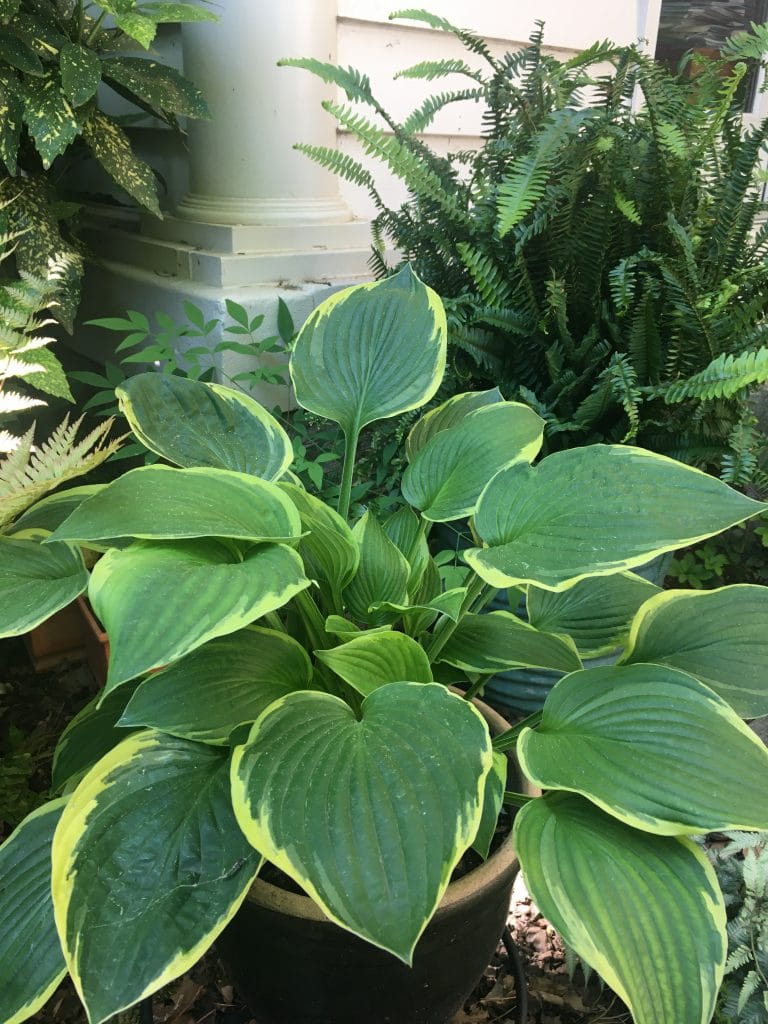
Heuchera. This shade-lover, also commonly called coral bells and alumroot, is another perennial that is a reliable presence in Middle Tennessee gardens. The flowers in late spring are small, but it’s the foliage of Heuchera sanguinea that provides the most interest. The plant grows in mounds of pretty leaves in shades that range from metallic silver to purple to chocolate brown. Heuchera thrives in rich, moist soil in that light shade; too much sun during summer will cause those colors to fade.
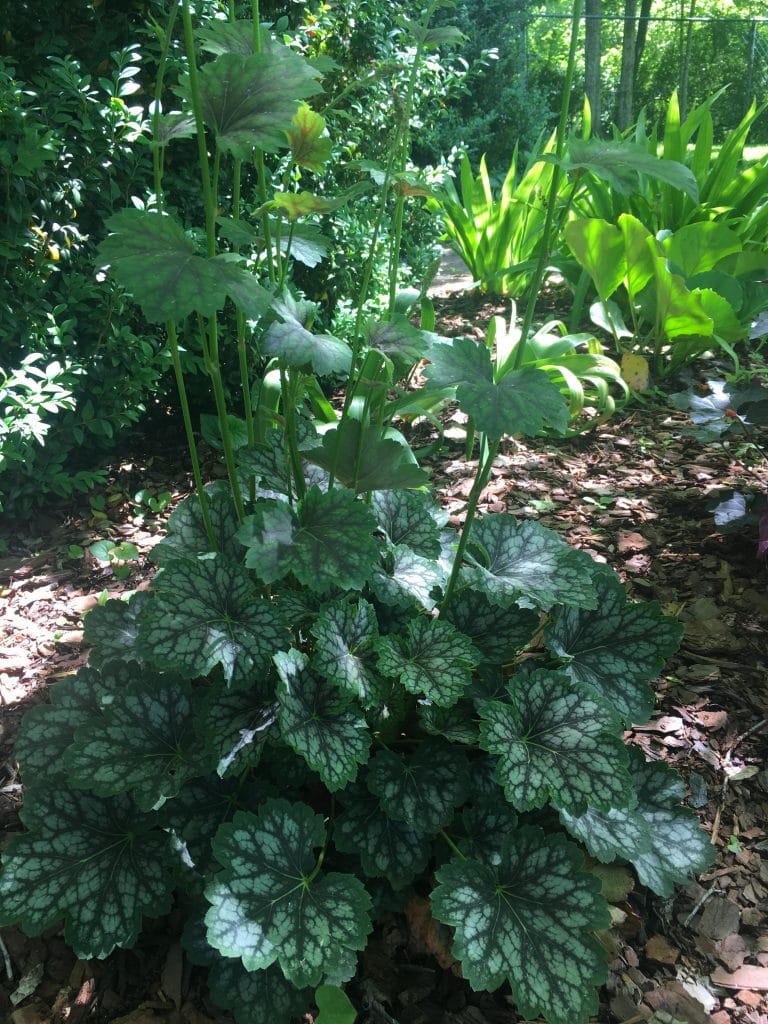
Solomon’s Seal. In early spring, upright colonies of Polygonatum blooming with rows of tiny, creamy white bell-shaped flowers is a charming sight. After the flowers fade, you still have handsome, sturdy plants whose green leaves with white margins stand out in a shady bed. As summer moves into fall, the leaves slowly fade to lemon yellow, and by winter, the stalks and leaves disappear but return reliably the following spring. Note: Solomon’s seal that is native to the U.S. has solid green foliage; the variegated species that you find in most garden centers is from Asia.
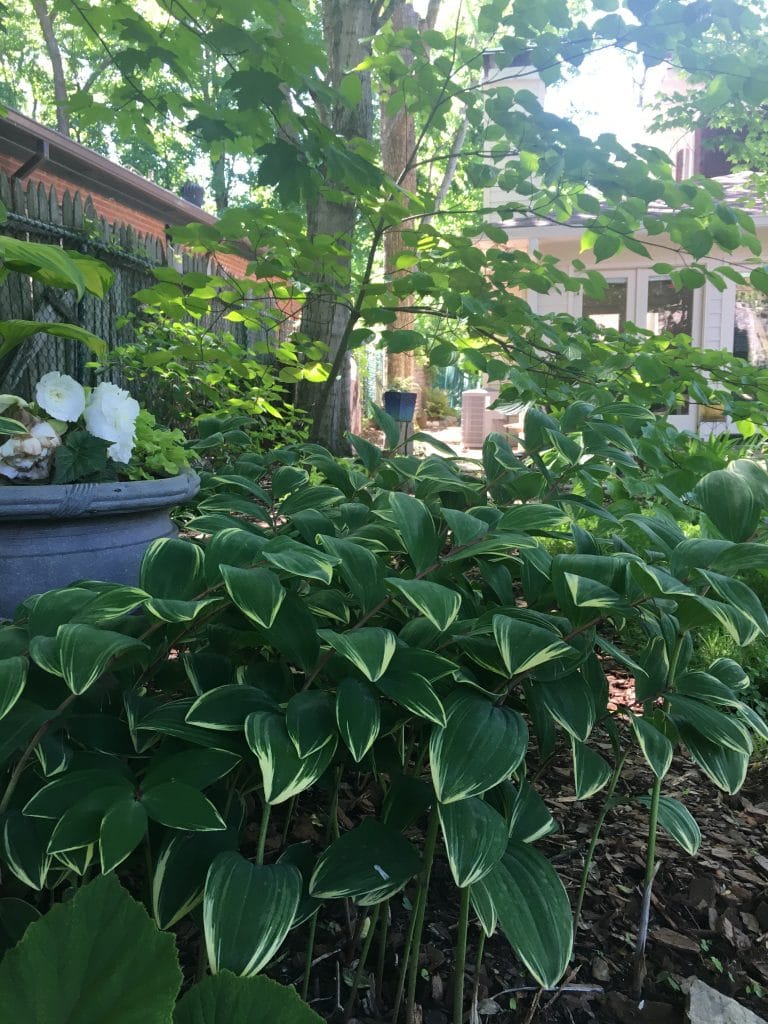
These are fine in full shade
Aucuba. If we can include one shrub in this list, let it be Aucuba japonica, an evergreen shrub that has large, glossy leaves dusted with yellow-white splotches. Aucuba grows fairly quickly, can reach 4 to 8 feet, and tolerates dry soil. If you like the look, it’s a good choice for foundation plantings and informal gardens.

Ajuga. This plant, commonly called bugleweed, is a good groundcover for a full-shade area. Ajuga reptans will spread by runners to form a low-growing carpet of foliage and send up whorls of tiny blue-purple or white flowers each spring. The most attractive for landscapes has glossy purple or copper-colored foliage, adding another layer of interest.
Ferns. In an area that’s not only shady but moist, ferns are a solid choice for adding texture and interest to the landscape. There are several species of hardy ferns that are perennials (don’t confuse them with ‘Boston’ or ‘Kimberly Queen’ varieties, which will not survive winter outdoors). Holly fern (Cyrtomium falcatum), Japanese painted fern (Athyrium niponicum var. pictum) and Autumn fern (Dryopteris erythrosora) are three that return and grow year after year.
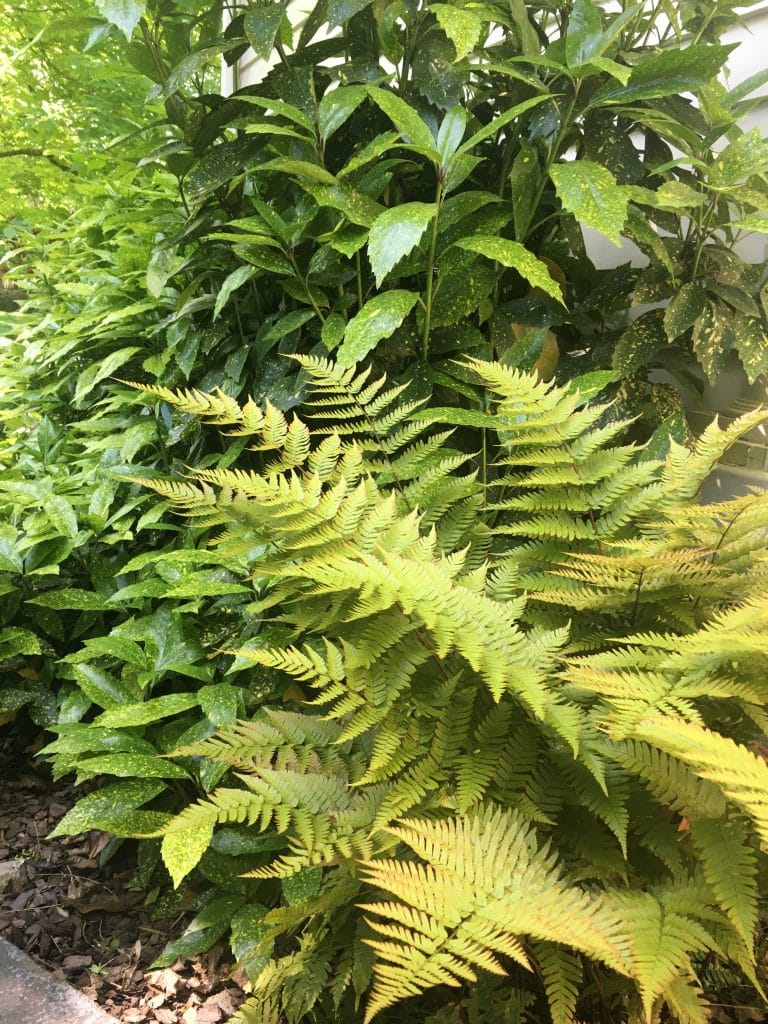
Visit the Gardens of Babylon Garden Center to find a wide selection of perennials for you shade garden, and for sunny spaces, as well.



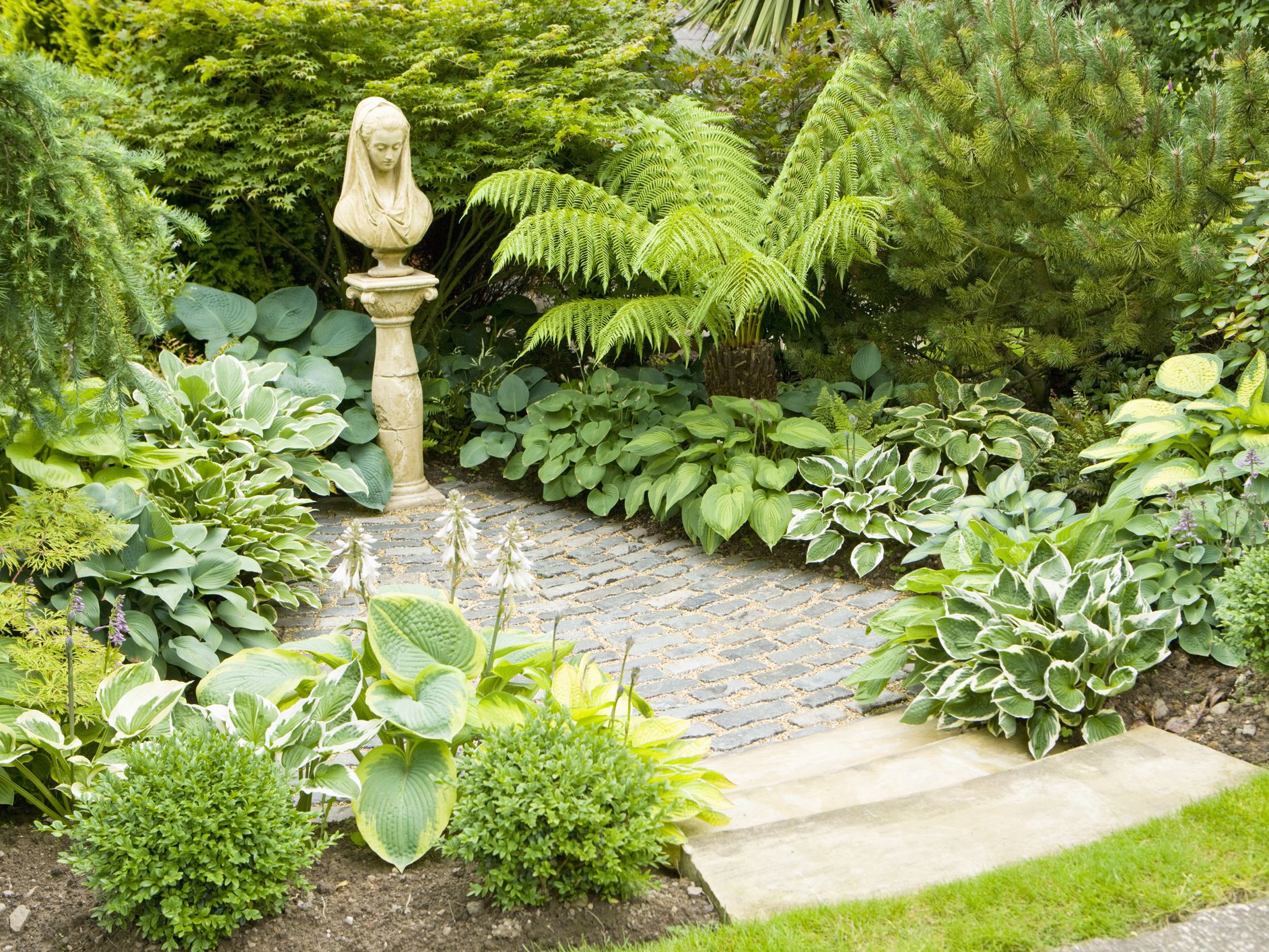
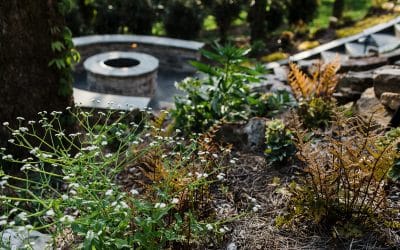

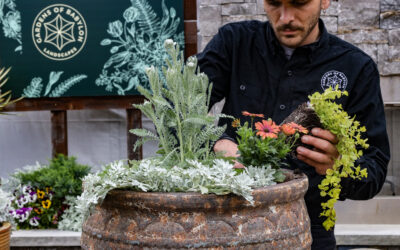
0 Comments